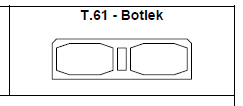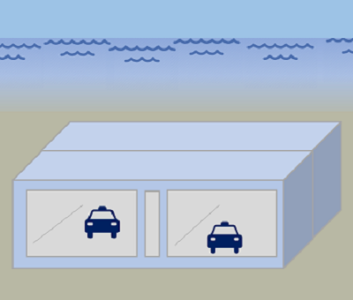Botlek Tunnel
HEIGHT: 8.8 m
WIDTH: 30.9 m
TOTAL IMMERSED LENGTH: 508 m
DEPTH AT BOTTOM OF STRUCTURE: 23.3 m
FABRICATION METHOD: All five elements were cast in an existing casting basin used for the Benelux Tunnel elements, having been refurbished. The sections were left submerged for about three months. They were refloated without problems by pumping out ballast water.
WIDTH: 30.9 m
TOTAL IMMERSED LENGTH: 508 m
DEPTH AT BOTTOM OF STRUCTURE: 23.3 m
FABRICATION METHOD: All five elements were cast in an existing casting basin used for the Benelux Tunnel elements, having been refurbished. The sections were left submerged for about three months. They were refloated without problems by pumping out ballast water.
Under Oude Maas River (?),
Netherlands

Ministry of Public Works; Rijkiswaterstaat
Joint venture of Voormolen and Ways & Freytag
Public Works of Rotterdam
4 - 105 m 1 - 87.5 m
508m
23.3m
Project construction
1980-04-30
5
Two tubes; three lanes each (two traffic lanes plus a breakdown lane)
8.8m
30.9m
Heavy floating shear leg cranes were used for placement.
All five elements were cast in an existing casting basin
used for the Benelux Tunnel elements, having been
refurbished. The sections were left submerged for about
three months. They were refloated without problems by
pumping out ballast water.
used for the Benelux Tunnel elements, having been
refurbished. The sections were left submerged for about
three months. They were refloated without problems by
pumping out ballast water.
Elements were placed using shear leg cranes. Survey and control towers were used for
alignment control and access.
alignment control and access.
Gina joints were used, except at the end tube, where
gasketted plates were employed.
gasketted plates were employed.
The elements were constructed of six 17.5 m sections post-tensioned together. The
post-tensioning was bonded. The wall pours were cooled using water pipes to eliminate
cracking due to heat of hydration.
post-tensioning was bonded. The wall pours were cooled using water pipes to eliminate
cracking due to heat of hydration.
Sand-flow method. As for the Hemspoor Tunnel, sand slurry was pumped into each
individual element through hoses attached by divers.
individual element through hoses attached by divers.

